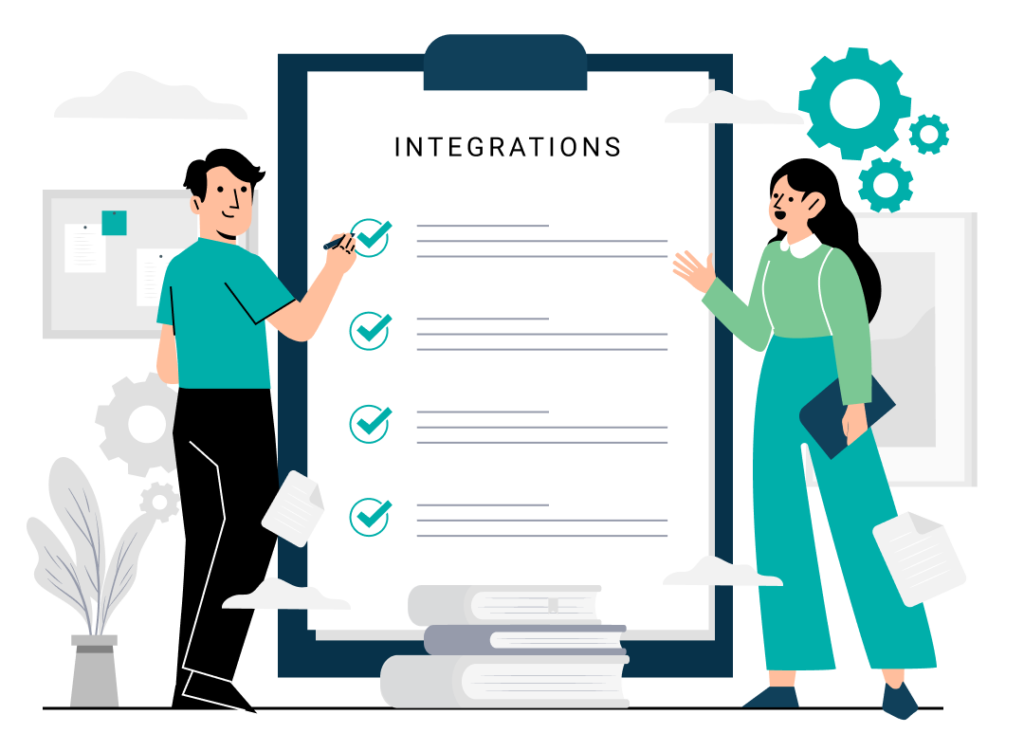Building effective DevOps teams requires more than hiring engineers with automation skills—it demands systematic planning, cultural change management, and structured capability development. You need teams that can break down silos between development and operations whilst maintaining the technical expertise to automate complex infrastructure and deployment processes.
Successful DevOps transformations create autonomous, cross-functional teams that deliver value faster whilst maintaining operational excellence. This framework addresses the core challenges you face: choosing the right team structure, developing transformation roadmaps, managing cultural change, and scaling operations across your organisation. For a comprehensive understanding of implementing automated systems, see The Complete DevOps Automation and CI/CD Pipeline Guide.
What team structure models work best for DevOps organisations?
The most effective DevOps team structures align technical capabilities with business delivery requirements whilst maintaining clear ownership and accountability. Your choice between embedded, centralised, or hybrid models depends on organisational maturity, scale, and strategic objectives.
Embedded DevOps Model places DevOps engineers directly within product teams, creating tight coupling between development and operations responsibilities. This structure excels in organisations with mature engineering practices and clear product boundaries. Netflix successfully uses this approach, with each product team maintaining their own deployment pipelines whilst sharing common infrastructure patterns developed by their platform engineering team.
The embedded approach works particularly well when you have distinct product lines or business units. Each team develops expertise in their specific domain whilst maintaining consistent practices through shared tooling and standards. Teams gain deep domain knowledge and can optimise their entire delivery pipeline without coordination overhead.
The key challenge lies in preventing silos and ensuring knowledge sharing across teams. You’ll need regular communities of practice and rotation programmes to maintain organisational coherence. Without these connecting structures, teams can develop incompatible approaches that create maintenance burdens later.
Centralised Platform Teams provide shared infrastructure, tools, and expertise that product teams consume as services. This model creates economies of scale and ensures consistent practices across your organisation. Spotify‘s platform model exemplifies this approach—their platform teams build internal developer platforms that abstract complexity whilst providing self-service capabilities for hundreds of development teams.
Platform teams focus on creating tools and services that make other teams more productive rather than directly delivering features. They might provide standardised deployment pipelines, monitoring solutions, and infrastructure patterns that product teams adopt through self-service interfaces. This approach reduces duplication and ensures consistent security and compliance practices.
The primary risk involves creating bottlenecks or developing solutions that don’t meet product team needs. Platform teams must treat internal teams as customers, using product management approaches to understand requirements and prioritise development work.
Hybrid Structures combine elements of both approaches, creating flexible arrangements that adapt to specific organisational needs. You might embed DevOps engineers in critical product areas whilst maintaining platform services for standard applications. Google uses this model effectively, with Site Reliability Engineering teams embedded in major product areas and shared infrastructure services available to all teams.
Hybrid approaches often emerge naturally as organisations scale. Early-stage companies might start with embedded engineers who later form the nucleus of a platform team. Mature organisations maintain specialised platform teams whilst embedding engineers where product complexity demands dedicated focus.
Success requires clear interfaces between teams and well-defined service agreements. You need explicit agreements about what services the platform provides, what embedded teams handle directly, and how the two approaches coordinate on shared concerns like security and compliance.
Communities of Practice overlay social structures onto technical teams to facilitate knowledge sharing and practice development. These communities help embedded teams avoid isolation whilst maintaining their product focus. DevOps engineers participate in regular meetings, shared communication channels, and collaborative projects that establish standards and share solutions to common problems.
How do you develop transformation roadmaps that actually work?
Effective DevOps transformation roadmaps balance ambitious vision with practical constraints, creating achievable milestones that build momentum whilst delivering measurable value. The most successful approaches focus on capabilities rather than tools, measuring progress through business outcomes rather than technical metrics.
Assessment and Current State Analysis forms the foundation of any successful transformation. Start by evaluating existing team capabilities using a structured assessment framework:
- Technical Capabilities: Current automation levels, deployment frequency (daily, weekly, monthly), incident response times, and testing coverage
- Organisational Factors: Team structures, decision-making processes, change approval workflows, and communication patterns
- Cultural Elements: Collaboration quality between development and operations teams, risk tolerance, learning orientation, and response to failures
Use the DORA metrics (deployment frequency, lead time for changes, time to recovery, and change failure rate) as baseline measurements. These provide concrete benchmarks for measuring transformation progress and comparing performance against industry standards.
Don’t skip this assessment phase—teams that attempt DevOps transformation without understanding their starting point frequently set unrealistic timelines and miss critical constraints that limit their approach.
Capability Development Phases structure the transformation journey into logical stages that build upon each other systematically:
Foundation Phase (Months 1-6): Establish basic practices necessary for advanced capabilities. Focus on standardising development environments, implementing basic automation, and establishing measurement systems. Teams learn fundamental practices like consistent version control, automated testing, and structured deployment processes.
Acceleration Phase (Months 6-18): Build upon foundational practices to implement continuous integration, automated deployment, and comprehensive monitoring. Teams develop testing strategies that enable confident deployments and begin implementing infrastructure as code. This phase typically delivers the most visible improvements in deployment frequency and reliability.
Optimisation Phase (Months 18-36): Focus on advanced practices like chaos engineering, advanced monitoring, and organisational learning. Teams develop capabilities for handling complex scenarios and optimising their entire delivery pipeline. This phase often involves organisational changes as teams become more autonomous and decision-making becomes distributed.
Each phase should deliver tangible business value whilst preparing the foundation for subsequent improvements. Early phases reduce manual work and improve consistency. Middle phases emphasise speed and quality improvements through automation. Later phases optimise for innovation speed and operational resilience.
Pilot Programme Strategy tests transformation approaches in controlled environments before broader rollout. Choose pilot teams that are technically capable and culturally receptive whilst working on applications that matter to your business. ING Bank successfully used this approach, starting with their mobile banking team before scaling DevOps practices across their entire organisation.
Pilot programmes typically run 3-6 months and focus on specific capability improvements with clear success metrics. For example, a pilot might target reducing deployment lead time from 2 weeks to 2 days whilst maintaining current quality levels. Document the pilot experience carefully—it informs your broader transformation strategy and identifies necessary adjustments before organisation-wide implementation.
Select pilot teams that can become transformation advocates within your organisation. These teams provide practical insights for scaling approaches and help address resistance from other teams who might be skeptical about changing established processes.
What skills assessment frameworks identify the right DevOps talent?
Effective DevOps skills assessment goes beyond technical knowledge to evaluate collaboration abilities, problem-solving approaches, and cultural alignment. The best frameworks assess both depth in specific areas and breadth across the DevOps spectrum, identifying candidates who can grow with expanding responsibilities.
Technical Competency Assessment Framework
Create a competency matrix that evaluates hands-on capabilities across these core areas:
- Infrastructure Automation: Configuration management (Ansible, Chef, Puppet), infrastructure as code (Terraform, CloudFormation), and cloud platforms (AWS, Azure, GCP)
- CI/CD Pipeline Design: Build automation, testing frameworks, deployment strategies, and pipeline orchestration
- Monitoring and Observability: Log management, metrics collection, alerting systems, and distributed tracing
- Security Integration: Security scanning, secrets management, compliance automation, and incident response
Focus assessment on fundamental concepts and problem-solving approaches rather than specific tool knowledge. Tools evolve rapidly, but underlying principles remain consistent. Present realistic scenarios like designing a deployment pipeline for a microservices application, asking candidates to explain their choices and trade-offs.
Strong candidates demonstrate understanding of business context and can adapt technical solutions to organisational constraints. They consider factors like team size, risk tolerance, and existing infrastructure when proposing solutions.
Collaboration and Communication Skills
DevOps success requires breaking down traditional silos between development and operations teams. Use behavioural interviewing techniques to evaluate:
- Cross-functional collaboration: Ask candidates to describe situations where they worked across organisational boundaries to solve technical problems
- Conflict resolution: Explore how they approached conflicts between development speed and operational stability
- Knowledge sharing: Assess their approach to documenting solutions and mentoring team members
- Stakeholder communication: Evaluate ability to translate technical concepts for non-technical stakeholders
Strong candidates demonstrate empathy for different perspectives and practical approaches to building consensus. They understand that technical solutions must account for human factors to achieve lasting success.
Systems Thinking and Problem-Solving Assessment
Present complex system failure scenarios and evaluate troubleshooting approaches. Strong candidates:
- Ask clarifying questions before proposing solutions
- Consider multiple root causes and their interconnections
- Design solutions that prevent similar problems rather than just fixing immediate issues
- Demonstrate understanding of feedback loops and unintended consequences
This systems perspective proves necessary for scaling DevOps practices across organisations where changes in one area often affect other components unexpectedly.
Cultural Fit and Growth Mindset Evaluation
DevOps culture values continuous learning, experimentation, and learning from failures. Assess candidates’ approach to:
- Continuous learning: How they stay current with technology trends and develop new skills
- Failure response: Their approach to post-incident reviews and learning from mistakes
- Experimentation: Willingness to try new approaches and challenge existing assumptions
- Knowledge sharing: Commitment to documenting solutions and helping team members grow
Look for candidates who demonstrate intellectual curiosity and practical approaches to professional development. They should understand that DevOps transformation requires changing how people work together, not just implementing new tools.
How do you structure transformation timelines for optimal results?
Structure your DevOps transformation timeline to balance urgency with sustainability, creating steady progress whilst avoiding change fatigue. Organise improvements into waves that build capabilities systematically whilst delivering regular wins that maintain organisational support.
Foundation Phase (Months 1-6): Building the Base
Establish basic practices and cultural foundations necessary for advanced capabilities:
- Environment Standardisation: Create consistent development environments using containerisation or virtual machines
- Basic Automation: Implement automated builds and basic testing pipelines
- Measurement Systems: Establish baseline metrics using DORA measurements and create dashboards for visibility
- Cultural Foundation: Begin regular retrospectives and cross-team collaboration meetings
Foundation work often appears less exciting than advanced DevOps practices, but proves necessary for later success. Teams that skip foundational steps frequently struggle with sophisticated capabilities. You need consistent practices and reliable measurement before optimising for speed.
Cultural changes begin as teams experience benefits from improved collaboration and reduced manual work. Start with small wins like automated deployments to staging environments or shared monitoring dashboards that provide visibility across teams.
Acceleration Phase (Months 6-18): Building Speed and Quality
Build upon foundational practices to implement continuous integration, automated deployment, and comprehensive monitoring:
- Advanced CI/CD: Implement automated testing strategies that enable confident production deployments
- Infrastructure as Code: Deploy infrastructure through version-controlled templates
- Comprehensive Monitoring: Add application performance monitoring and business metrics tracking
- Security Integration: Embed security scanning and compliance checks into deployment pipelines
This phase typically delivers the most visible improvements in deployment frequency and reliability. Organizations often see deployment frequency increase from monthly to daily whilst reducing incident response times significantly.
Pay careful attention to change management since teams adopt many new practices simultaneously. Training programmes, mentoring, and communities of practice become necessary for supporting teams through this transition.
Optimisation Phase (Months 18-36): Advanced Practices and Scaling
Focus on advanced practices that require mature teams and measurement systems:
- Chaos Engineering: Implement controlled failure testing to improve system resilience
- Advanced Monitoring: Deploy distributed tracing and predictive alerting systems
- Organisational Learning: Establish post-incident review processes that drive systematic improvements
- Cross-team Scaling: Extend successful practices across multiple teams and business units
This phase often involves organisational changes as teams become more autonomous and decision-making becomes distributed. You might implement new team structures, performance metrics, and planning processes that support faster innovation cycles. When calculating the financial impact of these improvements, consider implementing DevOps ROI and Cost Optimization Strategies.
Success requires sustained leadership commitment and careful change management. Teams need sophisticated capabilities to handle advanced practices like chaos engineering without creating stability problems.
What change management strategies overcome resistance to DevOps adoption?
Successful DevOps transformations require change management that addresses both technical and human factors. Focus on building understanding and capability rather than mandating compliance, creating sustainable change that survives leadership transitions and organisational pressures.
Stakeholder Alignment and Communication Strategy
Create shared understanding of transformation goals and benefits across different organisational levels by tailoring communication to specific audience concerns:
- Executive stakeholders focus on business metrics like time-to-market improvements, operational efficiency gains, and competitive advantages
- Engineering managers care about team productivity improvements, quality enhancements, and technical debt reduction
- Individual contributors want to understand how changes affect daily work, skill development, and career progression
Develop specific communication materials for each audience whilst maintaining consistent overall messaging. Use concrete examples from your pilot programmes to demonstrate transformation benefits. If your pilot team reduced deployment time from 2 weeks to 2 hours whilst maintaining quality, share this success story across all communications.
Regular communication through multiple channels maintains awareness and momentum. Town halls provide organisation-wide updates, team meetings address local concerns, and informal conversations help address individual questions. Transparent discussion of challenges builds trust and demonstrates realistic expectations.
Training and Capability Development Programme
Ensure teams have necessary skills for adopting new practices through comprehensive training that accommodates different learning styles:
- Formal Training: Classroom instruction covering fundamental concepts and best practices
- Hands-on Practice: Laboratory environments where teams can experiment with new tools safely
- Mentoring Relationships: Pair experienced practitioners with those developing new skills
- Communities of Practice: Regular meetings and shared communication channels for ongoing support
Training continues throughout the transformation as practices evolve and new capabilities are introduced. Initial programmes focus on basic automation and collaboration practices. Later training addresses advanced topics like infrastructure design, monitoring strategies, and incident response.
Build internal training capability rather than relying solely on external providers. Internal trainers understand your specific context and can provide ongoing support as teams encounter challenges during implementation.
Incentive Alignment and Recognition Systems
Ensure organisational rewards support desired behaviours by aligning performance metrics, recognition programmes, and career advancement opportunities with DevOps principles:
- Balanced Metrics: Replace metrics that emphasise either speed or stability with balanced scorecards that reward both deployment frequency and system reliability
- Team-based Recognition: Celebrate collaborative achievements rather than individual technical accomplishments
- Learning Recognition: Acknowledge teams that improve their processes through experimentation and learning from failures
Traditional operational metrics often conflict with DevOps practices. Operations teams measured on uptime might resist frequent deployments, whilst development teams measured on feature delivery might ignore operational concerns. New metrics should encourage collaboration and continuous improvement.
Recognition programmes should celebrate behaviours that support transformation goals. Recognise teams that improve deployment processes, individuals who share knowledge across teams, or groups that successfully respond to incidents through effective collaboration.
Leadership Modelling and Cultural Evolution
Demonstrate commitment to transformation principles through leadership behaviour and organisational decisions. Leaders who embrace transparency, experimentation, and continuous learning create environments where DevOps practices flourish:
- Vulnerability and Learning: Leaders who admit mistakes and ask questions create psychological safety for team members to embrace new practices
- Investment in Improvement: Consistent decisions that support DevOps principles even when they create short-term challenges
- Process Participation: Leaders who participate in retrospectives and post-incident reviews demonstrate commitment to continuous improvement
Cultural change happens gradually through consistent reinforcement of desired behaviours and values. Leadership modelling proves more influential than formal policies in driving sustainable change.
Organisational decisions should consistently support DevOps principles. Accept temporary productivity decreases whilst teams learn new tools. Invest in infrastructure improvements that don’t deliver immediate returns. This consistent decision-making builds trust and demonstrates genuine commitment to transformation goals.
How do you scale DevOps practices across large organisations?
Scaling DevOps practices across large organisations requires systematic approaches that maintain quality whilst accommodating organisational complexity. Combine standardised platforms with local autonomy, creating consistency without stifling innovation or ignoring local constraints.
Platform Strategy and Internal Product Development
Create shared infrastructure and tooling that teams across your organisation can consume as services. Treat platform development as internal product management, understanding user needs and providing excellent customer service to internal teams:
- Self-Service Infrastructure: Provide deployment pipelines, monitoring solutions, and infrastructure provisioning through self-service interfaces
- Configuration Flexibility: Balance standardisation with customisation options that allow teams to adapt services to specific needs
- Developer Experience Focus: Prioritise ease of use and clear documentation over technical sophistication
- Service Level Agreements: Establish clear performance and support commitments for internal platform services
Effective platforms reduce complexity for consuming teams whilst maintaining flexibility for different use cases. Teams should be able to deploy applications, access monitoring data, and manage infrastructure without requiring deep operational expertise.
Platform evolution requires treating internal teams as valued customers rather than captive users. Conduct regular user research, prioritise feature development based on user needs, and provide responsive support services. Successful platform teams often have dedicated product managers who focus solely on internal user experience.
Community Building and Knowledge Sharing Networks
Create networks that facilitate practice development and problem-solving across organisational boundaries. DevOps communities bring together practitioners from different teams to share experiences, solve common problems, and establish consistent practices:
- Communities of Practice: Regular meetings where practitioners share solutions and discuss challenges
- Internal Conferences: Annual or quarterly events showcasing successful practices and new techniques
- Mentorship Programmes: Structured relationships connecting experienced practitioners with teams beginning their DevOps journey
- Knowledge Management Systems: Wikis, recorded presentations, and case study databases that make insights easily discoverable
Communities often prove more effective than formal training programmes for spreading knowledge and building capability. They create social connections that facilitate informal knowledge sharing and problem-solving support.
Successful communities balance formal structure with organic interaction. Provide regular meeting schedules and communication platforms whilst allowing natural relationship development and topic emergence based on current challenges.
Governance Framework That Enables Innovation
Establish guidelines that ensure consistent practices whilst maintaining team autonomy and innovation capability. Focus on outcomes rather than processes, defining required results without mandating specific approaches:
- Security and Compliance Standards: Specify encryption requirements and access controls without dictating implementation technologies
- Performance Requirements: Define response time and availability targets without constraining architectural choices
- Quality Gates: Establish testing and monitoring requirements whilst allowing teams to choose specific tools and approaches
- Escalation Procedures: Clear processes for handling exceptions and special cases without creating bureaucratic overhead
Standards development should involve practitioners from across the organisation rather than being imposed by central teams. Working groups with representatives from different business units develop more practical and widely accepted standards.
Regular review and update processes ensure standards evolve with changing technologies and organisational needs. Standards that become outdated create compliance burdens without delivering value.
Measurement and Continuous Improvement Systems
Provide visibility into transformation progress and identify improvement opportunities across your organisation. Establish consistent metrics that support both local optimisation and organisational learning:
- DORA Metrics: Track deployment frequency, lead time for changes, recovery time, and change failure rate across all teams
- Business Impact Metrics: Connect technical improvements to business outcomes like customer satisfaction and revenue impact
- Team Health Indicators: Monitor team satisfaction, learning rate, and collaboration quality
- Platform Usage Analytics: Track adoption and satisfaction with internal platform services
Dashboard design should provide different views for different audiences. Executive dashboards focus on high-level trends and comparative performance across business units. Team dashboards provide detailed operational metrics for day-to-day decision making. Individual dashboards might focus on personal development and skill building.
Use measurement data to identify teams that need additional support and successful practices that should be shared more broadly. Regular analysis of metrics trends helps identify improvement opportunities and potential problems before they become critical issues. For comprehensive approaches to measurement and system visibility, explore Monitoring and Observability for DevOps Excellence.
FAQ
What’s the difference between DevOps teams and traditional IT operations?
DevOps teams integrate development and operations responsibilities within cross-functional groups that own entire application lifecycles. Traditional IT operations manage infrastructure separately from development teams, creating handoffs and communication barriers. DevOps teams share responsibility for both feature delivery and operational stability, making decisions collaboratively rather than through separate organisational hierarchies.
How long does a typical DevOps transformation take?
Most organisations see initial benefits within 6-12 months but require 2-3 years for complete cultural and technical transformation. Timeline depends on starting capabilities, organisational complexity, and commitment to change management. Early phases focus on basic automation and collaboration improvements whilst later phases address advanced practices and cultural evolution.
Should we hire DevOps engineers or train existing staff?
The most successful approach combines both strategies based on specific organisational needs and constraints. Hiring experienced DevOps engineers provides immediate expertise and change leadership whilst training existing staff ensures cultural continuity and domain knowledge retention. Balance hiring key technical leaders with developing internal capabilities through structured training programmes and mentoring relationships.
What tools are necessary for DevOps success?
Tool selection should support organisational practices rather than driving them. Focus on version control systems, automated testing frameworks, deployment pipelines, monitoring solutions, and collaboration platforms. However, successful DevOps depends more on cultural practices and team collaboration than specific technology choices. Achieve better results focusing on process improvements before investing heavily in sophisticated tooling.
How do you measure DevOps success?
Effective measurement combines technical metrics with business outcomes and cultural indicators. Use DORA metrics (deployment frequency, lead time for changes, recovery time, and change failure rate) as core technical measurements. Business metrics might address time-to-market, operational efficiency, and customer satisfaction. Cultural metrics evaluate collaboration quality, learning behaviours, and employee satisfaction.
What are the biggest obstacles to DevOps adoption?
Cultural resistance often proves more challenging than technical limitations. Common obstacles include organisational silos, risk-averse cultures, inadequate skills, and misaligned incentives. Technical challenges involve legacy systems, security requirements, and compliance constraints. Address cultural and technical obstacles simultaneously through comprehensive change management that builds understanding and capability gradually.
How do you maintain quality whilst increasing deployment frequency?
Quality maintenance requires shifting from manual testing and approval processes to automated quality gates and continuous monitoring. Implement comprehensive test automation, infrastructure as code, feature flags for controlled rollouts, and monitoring that enables rapid problem detection. Teams learn to identify and fix problems quickly rather than preventing all problems through slow manual processes.
What role does leadership play in DevOps transformation?
Leadership commitment proves necessary for successful transformation since DevOps requires organisational changes that extend beyond individual teams. Leaders must provide resources, remove obstacles, align incentives, and model desired behaviours. Demonstrate commitment to experimentation, learning from failure, and continuous improvement. Without sustained leadership support, transformation efforts stall when encountering organisational resistance or competing priorities.
Conclusion
Building and scaling DevOps teams requires strategic thinking that balances technical capabilities with organisational dynamics. Focus on developing capabilities systematically whilst managing cultural change thoughtfully. Organisations that invest in structured transformation processes, comprehensive skills development, and sustainable practices create competitive advantages that extend beyond improved deployment frequencies.
DevOps success depends more on organisational factors than technical tools. Teams that collaborate effectively, learn from failures, and continuously improve their practices outperform those with sophisticated tooling but poor cultural foundations. Transformation strategies must address human factors as seriously as technical capabilities.
Start by assessing your current state honestly using structured frameworks and DORA metrics. Choose team structures that align with your organisational context—embedded models for mature organisations with clear product boundaries, platform models for scale and consistency, or hybrid approaches that provide flexibility. Develop transformation roadmaps that build capabilities systematically through foundation, acceleration, and optimisation phases.
Focus on developing people and practices before investing heavily in tools and technology. With sustained commitment and strategic execution, your DevOps transformation will create an organisation that delivers value faster whilst maintaining operational excellence.












